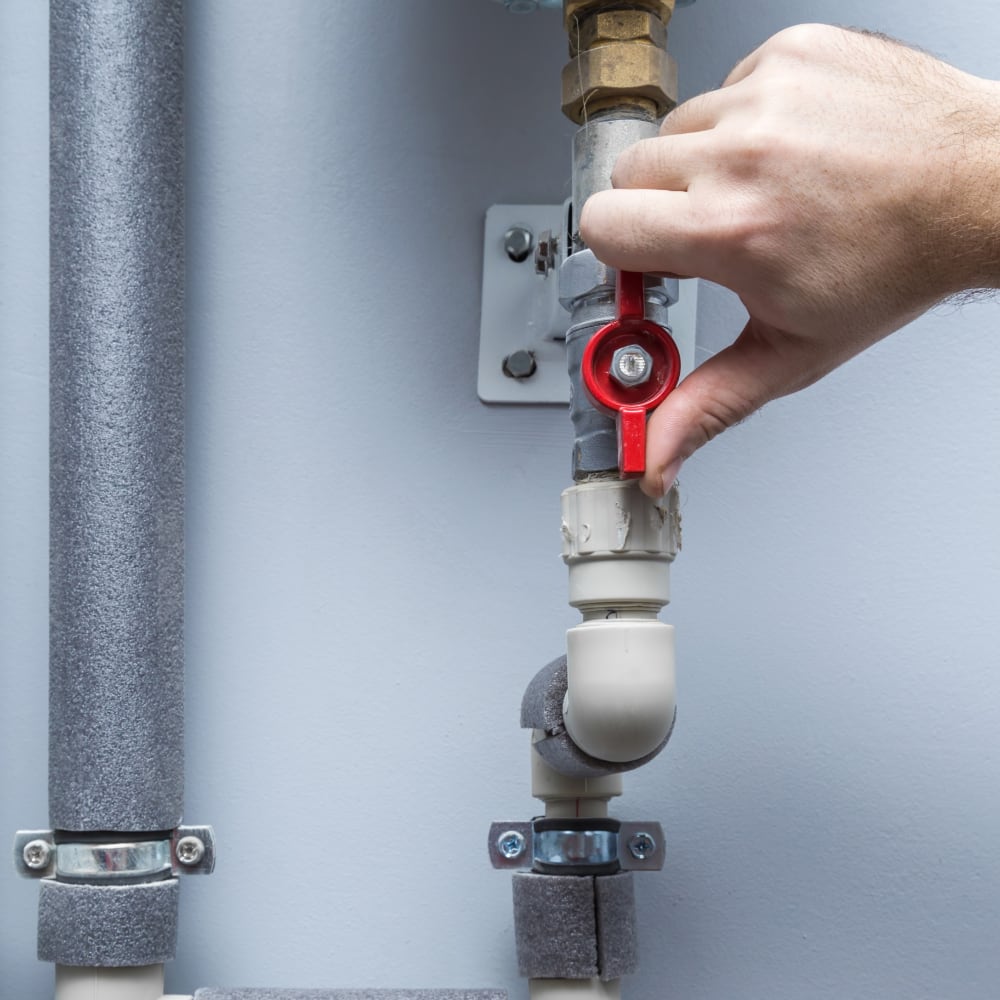Trying to diagnose problems with your shower can be difficult as there are many different points of failure. However, a sudden and sustained spike while showering is often the result of a misaligned or slipped water restrictor, which can be fixed in a matter of minutes.
We’ll share more on this and some other, but unlikely, things that can adjust the water pressure in your shower.
A misaligned water restrictor valve is the likely cause
Starting on January 1, 1994, the federal government mandated that all new shower heads must have a flow rate of 2.5 gallons per minute (GPM) or less. To adhere to this regulation, companies added a mechanism to shower heads, often referred to as a water restrictor valve or water saver, which limits the flow of water that comes out of a shower head.
As with most plumbing fixtures, things can wear out over time, and the water restrictor valve is no exception. If the water restrictor slips or isn’t properly aligned, an increased flow rate greater than 2.5 GPM, or whichever the flow rate of your shower head is, can occur. This results in a sustained increase in pressure.
Realigning the water restrictor valve is easy and involves the removal of your shower head with an adjustable wrench or pliers and using your hands or a flathead screwdriver to set it back into place. In the event that the washer or disc is fully worn out, then you can purchase either a completely new shower head or individual restrictor valves at your local hardware store or online.
Reduce flow by adjusting the water shut-off valve

Often located either in your bathroom or on the opposite side of the shower wall in the neighboring room, you’ll find the water shut-off valve that affects just the shower water only. By closing the pipe halfway, you can limit the amount of water that gets to your shower. This adjustment can be tricky as it could lead to an uneven reduction in hot or cold water. We recommend doing this with a partner and having them feel the water temperature while you adjust the valve to make sure it’s even.
Clean the shower head for even flow and pressure

Mineral deposits and debris will gradually clog nozzles, redirecting the flow of water to fewer outlets. While this won’t contribute to a sudden rise in pressure, it may lead to a gradual increase over time. To keep your shower head performing optimally, clean and scrub it with a brush to lift debris and buildup to ensure even flow and pressure.
Likely not the shower valve or cartridge
While shower valves may have a mechanism that balances both the pressure and temperature, this is designed for the water coming into the shower rather than the water coming out. As such, replacing this is likely to lead to unnecessary costs and won’t resolve the problem.
Air in the water lines often leads to sputtering
Whether you recently hired a plumber to fix or alter some of the pipes in your home, or your home is in a new development with active construction, air may have entered the water lines. Trapped air often leads to a sputtering or inconsistent flow of water rather than drastic increases or decreases in pressure. Of course, if there is air in your lines, you’ll want to bleed them to remove the trapped air.
Is the problem isolated to just your shower?
If other plumbing fixtures in your house are experiencing a sudden increase in pressure, then the water line coming into the house should be adjusted. Slightly close the water line to reduce the flow of water coming into the house. Furthermore, we recommend contacting your local water utility to see if there are any system-wide issues that may be affecting your home.
